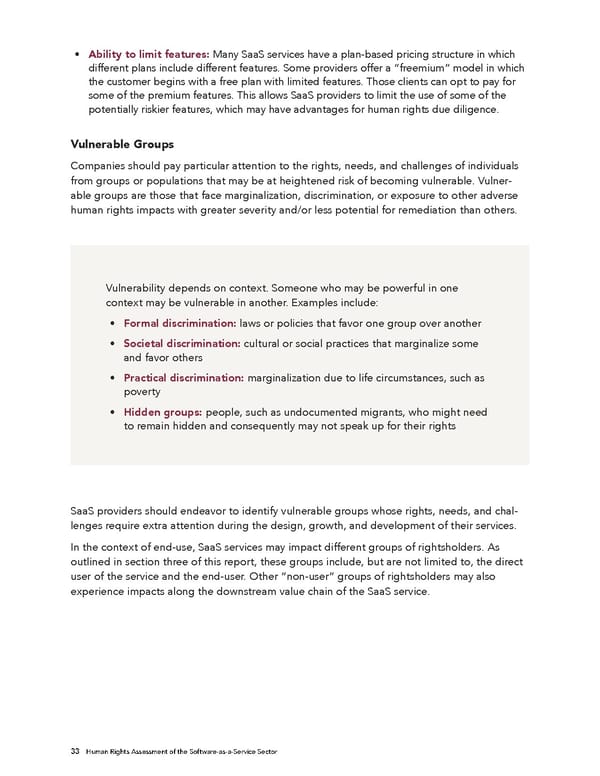• Ability to limit features: Many SaaS services have a plan-based pricing structure in which different plans include different features. Some providers offer a “freemium” model in which the customer begins with a free plan with limited features. Those clients can opt to pay for some of the premium features. This allows SaaS providers to limit the use of some of the potentially riskier features, which may have advantages for human rights due diligence. Vulnerable Groups Companies should pay particular attention to the rights, needs, and challenges of individuals from groups or populations that may be at heightened risk of becoming vulnerable. Vulner- able groups are those that face marginalization, discrimination, or exposure to other adverse human rights impacts with greater severity and/or less potential for remediation than others. Vulnerability depends on context. Someone who may be powerful in one context may be vulnerable in another. Examples include: • Formal discrimination: laws or policies that favor one group over another • Societal discrimination: cultural or social practices that marginalize some and favor others • Practical discrimination: marginalization due to life circumstances, such as poverty • Hidden groups: people, such as undocumented migrants, who might need to remain hidden and consequently may not speak up for their rights SaaS providers should endeavor to identify vulnerable groups whose rights, needs, and chal- lenges require extra attention during the design, growth, and development of their services. In the context of end-use, SaaS services may impact different groups of rightsholders. As outlined in section three of this report, these groups include, but are not limited to, the direct user of the service and the end-user. Other “non-user” groups of rightsholders may also experience impacts along the downstream value chain of the SaaS service. 33 Human Rights Assessment of the Software-as-a-Service Sector
 Human Rights Assessment of the Software-as-a-Service Sector Page 33 Page 35
Human Rights Assessment of the Software-as-a-Service Sector Page 33 Page 35